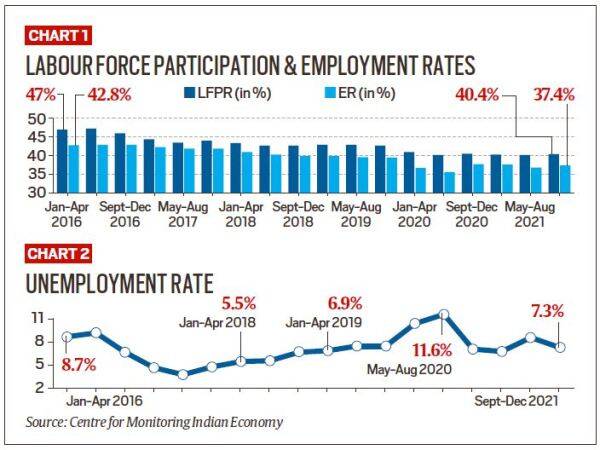900 319 0030
enquiry@shankarias.in
Centre for Monitoring Indian Economy (CMIE) data shows that India’s labour force participation rate (LFPR) has fallen to 40% from an already low 47% in 2016.
The world over, LFPR is around 60%. In India, it has been sliding over the last 10 years and has shrunk from 47% in 2016 to just 40% as of December 2021.

References